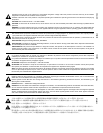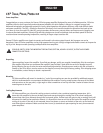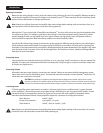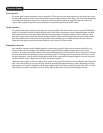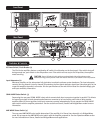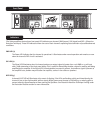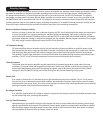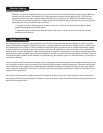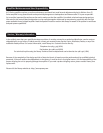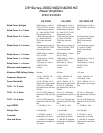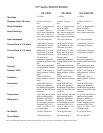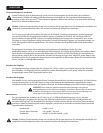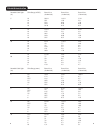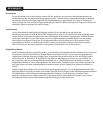
RampUp
™
Signal Control
Whenever a CS
®
Series amplifier powers up or comes out of a protect mode, the RampUp circuit activates. While the
speakers are disconnected, the RampUp circuit fully attenuates the signal and activates the DDT
™
LED. After the
output relay closes, the signal slowly and gradually raises up to its set level. The PWR LED will illuminate and the
DDT LED will turn off when the signal is no longer attenuated. The RampUp Signal Control circuit has some important
advantages over the conventional instant-on circuits:
1. If a signal is present during power-up (or when coming out of protect), the speakers are spared a sudden,
potentially damaging burst of audio power.
2. Because the gain is reduced until after the output relay closes, no arcing occurs at the contacts, thereby
extending their useful life.
All loudspeakers have electrical, thermal and physical limits that must be observed to prevent damage or failure. Excessive
power, low frequencies applied to high frequency drivers, severely clipped waveforms, and DC voltage can all be fatal to cone
and compression drivers. Peavey CS Series amplifiers automatically protect speakers from DC voltages and subsonic signals.
If using an electronic crossover, be extremely careful that the low and mid bands are connected to the correct amplifiers and
drivers and not to those designed for a higher frequency band. An amplifier’s clipping point is its maximum peak output power,
and some of the higher powered Peavey CS Series amplifiers can deliver more power than many speakers can safely handle. Be
sure the peak power capability of the amplifier is not excessive for your speaker system. For more information, see the section
on Protection Features.
Fuses may also be used to limit power to speaker drivers, although as current-limiting rather than voltage-limiting devices, they
are an imperfect solution, and as the weakest links, they only limit once before needing replacement. Some poor-quality fuses
have a significant series resistance that could degrade the amplifier’s damping of the speaker’s motion and may even deterio-
rate the system’s sound quality. If you elect to use fuses, check with the speaker manufacturer to determine the proper current
rating and time lag required.
Do not drive any low frequency speaker enclosure with frequencies lower than its own tuned frequency; the reduced acousti-
cal damping could cause a ported speaker to bottom out even at moderate power. Consult the speaker system specifications to
determine its frequency limits.
Speaker Protection
Protection Features



